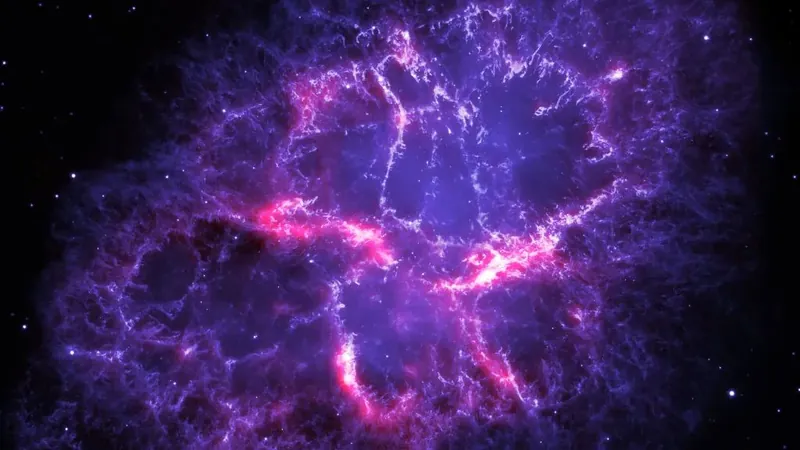
Astronomers Uncover the Mystery of the Zebra Pattern Emitted by the Crab Pulsar – Here’s What You Need to Know!
2024-11-25
Author: Jia
Introduction
In 1054 AD, a brilliant star lit up the night sky, captured in historical records around the globe. Today, scientists agree that this celestial event was a supernova explosion, leading to what we now know as the Crab Nebula—a magnificent structure made of interstellar gas and dust, illuminated by the remnants of a dying star. This supernova eventually gave birth to a pulsar: a rapidly spinning neutron star that emits beams of electromagnetic radiation, including the enigmatic 'zebra' pattern observed in the high-frequency range.
What is the Zebra Pattern?
But what exactly is this zebra pattern? A physics expert at the University of Kansas, Mikhail Medvedev, believes he has cracked the code behind this peculiar emission. Describing the pulsar's emissions akin to a lighthouse beam, Medvedev explains that these beams sweep past Earth as the star rotates. The Crab Pulsar, located 6,000 light-years away, showcases a unique pulse structure, delivering an astonishing one to two pulses per rotation.
Understanding the Emissions
The zebra pattern arises from an unusual spacing between its emissions in the electromagnetic spectrum, which is directly tied to the frequencies involved. Medvedev emphasizes the brightness of the pulsar, stating, 'It’s very bright across practically all wave bands.' The mesmerizing zebra pattern is not just any pulsar behavior; it manifests only in the high-frequency interpulse component, which varies between 5 and 30 gigahertz—frequencies comparable to those emitted by microwave ovens!
Breakthrough in Research
This peculiar pattern was first detected in 2007, yet a definitive explanation remained elusive until now. Medvedev’s breakthrough lies in a cutting-edge method to measure the density of plasma surrounding the pulsar, composed of superheated charged particles. By analyzing the diffraction patterns caused by this plasma, he and his team could unveil the distribution and density of the magnetic environment encasing the neutron star. 'This technique allows us to perform a sort of 'tomography' of the magnetosphere, providing a detailed visualization,' he shared.
Cosmic Significance
The Crab Pulsar is a relatively young star by cosmic standards—about a thousand years old—and is recognized for its high energy output. However, it's just one among hundreds of known pulsars, many of which also exhibit youthful characteristics. Notably, binary pulsars, which have played pivotal roles in testing Einstein’s theory of general relativity, can also be investigated using the methodologies proposed by Medvedev.
Conclusion
This new understanding of the Crab Pulsar and its distinctive emissions not only broadens our grasp of pulsars, particularly in the young and energetic category, but also enhances the observational techniques employed in astrophysics. The insights garnered from this research may pave the way for future explorations into the complex behaviors of neutron stars and their magnetic environments, igniting further interest in the mysteries of our universe.


 Brasil (PT)
Brasil (PT)
 Canada (EN)
Canada (EN)
 Chile (ES)
Chile (ES)
 España (ES)
España (ES)
 France (FR)
France (FR)
 Hong Kong (EN)
Hong Kong (EN)
 Italia (IT)
Italia (IT)
 日本 (JA)
日本 (JA)
 Magyarország (HU)
Magyarország (HU)
 Norge (NO)
Norge (NO)
 Polska (PL)
Polska (PL)
 Schweiz (DE)
Schweiz (DE)
 Singapore (EN)
Singapore (EN)
 Sverige (SV)
Sverige (SV)
 Suomi (FI)
Suomi (FI)
 Türkiye (TR)
Türkiye (TR)